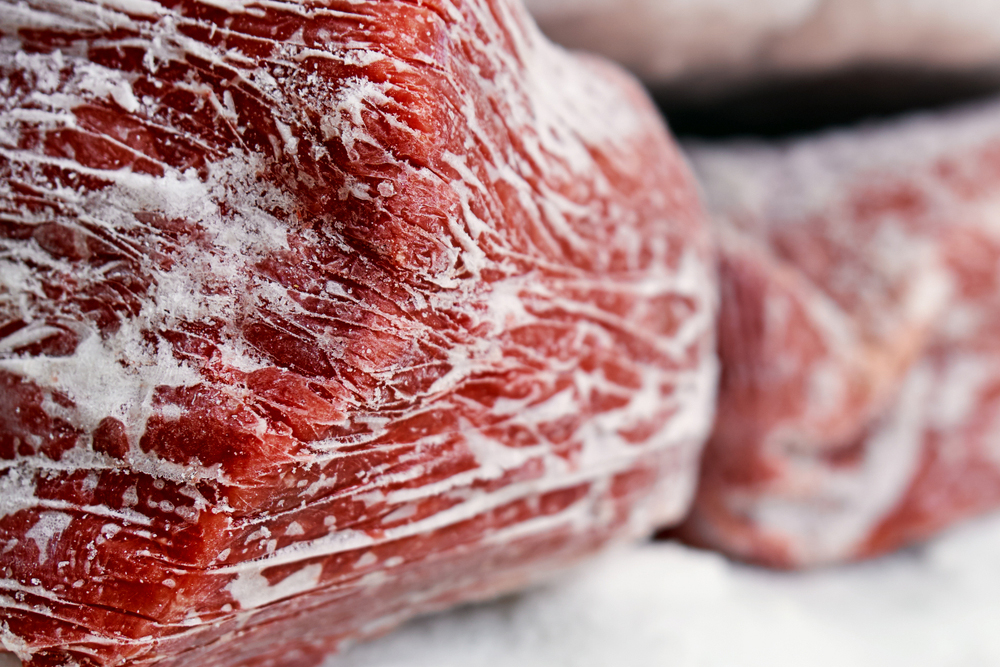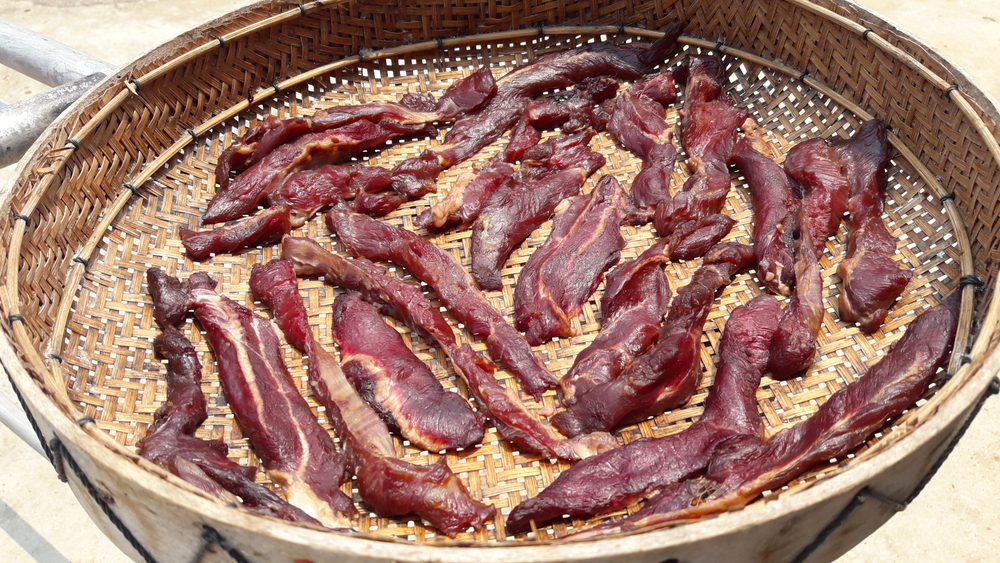A Guide To Meat Preservation In The Wild
When you’re attempting to survive in the wild, meat preservation is a ability that will arrive in helpful. In this article’s why and how to preserve meat for survival.
3 Procedures of Meat Preservation
There are four primary pillars of survival: Food stuff, h2o, fire, and shelter.
The rule of threes states that you can only endure three several hours devoid of heat from fireplace or shelter, a few days devoid of water, and 3 weeks with no foodstuff. Foods ultimately gets to be important, but it is not the most urgent precedence in survival situations.
So why does it continue being so essential?
Although it can just take weeks to die of starvation, you start out to see the consequences just about straight away. When you deprive your system of energy, it starts off to virtually take in by itself.
Very first, the human body burns extra fat reserves for calories. At this level, you sense some starvation pangs and most likely weakness or a headache, but nothing critical.
Within just a 7 days or two, the physique moves on to burning muscle mass mass and organ tissue. This is where by issues get rough. You will expertise melancholy, confusion, disorientation, decline of motor competencies, weak point, lightheadedness, and extreme system pains together with intense problems.
Perfectly ahead of you die of starvation, the course of action will make it virtually unachievable to purpose. This usually means that other vital jobs this sort of as collecting water and firewood may possibly not come about. In addition, meals is crucial as a morale booster so you have the commitment to hold heading.
The most significant issue with meals in the wild is preservation. Preserving meat in the wild is not uncomplicated. Without energy, freezing or refrigerating meat is just about difficult.
We will have to assume again to the time of our ancestors when they didn’t have electrical energy for this intent. Individuals would go hunting and harvest meat, but then had to figure out how to maintain it preserved to try to eat more than a lengthy time period of time.
When it is complicated, you do have a several excellent selections. Down below, we will go over the unique strategies you can successfully protect meat in the wild for future use.
1. Freezing or Chilling

Devoid of electricity, freezing or chilling meat can be extremely complicated. If it is winter, you can bury meat in snow or surround it with blocks of ice. Nevertheless, this does go away it susceptible for animals to get at it. Some people today will include the meat in snow and then in hefty rocks to check out and maintain predators absent.
Also, if the air temperatures are underneath freezing, you can just dangle a bear bag. Tie the meat in a bag and connect a very long piece of cordage. Toss it in excess of a department extra than 10 toes off of the ground and pull it up. Tie it off, and it will be high sufficient that predators can not get to it.
You can also cool the meat in a spring or chilly stream. Set it in a bag so fish simply cannot get to it and sink it with a rock. Then tie it off to a tree or rock on the shore.
A further option for chilling is using a zeer pot. This is a system that utilizes drinking water evaporation to create a cooling result. It will only function if you have two pots and some sand.
- Begin by including a couple inches of sand to the base of the larger pot.
- Spot the second pot inside of, and then fill the hole among the two pots with much more sand.
- Upcoming, saturate the sand with amazing water from a stream.
- Place your meat in the heart pot and then cover only the meat with a moist fabric.
- As the water in the sand evaporates, it will neat down the air inside of.
- Continue to incorporate interesting h2o to the sand as the h2o evaporates. This will assist keep meat fresh for a several excess times.
2. Curing and Drying

The enemy of meat preservation is dampness. If you can take out most of the humidity, the meat will last lengthier. There are two alternatives to do this in the wild that do not entail a fireplace.
One particular is to get rid of or salt the meat. This is the process of packing it in salt or a combination of curing salt and other components. It normally takes a massive volume of salt to do this, so for most people today in the wild, it is not a practical alternative. If you have the salt, pack at minimum an inch all the way about the meat and put it in a awesome, dry location. About time the salt will attract out the humidity.
You can also dry meat in the sunlight if it is incredibly hot sufficient.
- Initially, minimize the meat into slim strips. I recommend fewer than ¼ inch thick.
- Then score it on both sides to build even more surface region.
- Locate a rock in immediate sunlight and lay it all out. Even improved, you can construct a rack or string it up with cordage. The additional airflow it has, the greater.
It will take quite a few times for the solar to attract out the humidity, so pull the meat inside of at night so animals do not get to it. When it is finished, it really should be the regularity of jerky. No dampness should really occur out if you squeeze it.
If you can mix curing and drying, that is a finest-case state of affairs. You can do just one process ahead of the other, or you can just salt it heavily prior to location the meat out in the sunshine.
3. Cigarette smoking
Watch this write-up on Instagram
Probably the most successful way to protect meat in the wilderness is smoking. This course of action accomplishes two plans. It removes humidity and also kills mildew and bacteria when leaving a pleasant smoky flavor.
Yet again, begin by slicing your meat into strips fewer than ¼ inch thick. If you cut across the grain of the meat, it will dry faster, and the smoke will penetrate the meat improved. Reduce off any excess fat as this will not smoke effectively. Score both sides of the meat and insert salt and/or spices if you have any.
Upcoming, create a tripod with a few poles. You want the poles to be 4 to six ft very long dependent on how a lot meat you are smoking. Then, construct a fireplace underneath and permit it melt away down to coals.
Coals are a great deal more predictable than flames for estimating temperature. Set your hand above the coals at the sought after height. If you can keep your hand there for 8 seconds ahead of needing to pull it absent, that is best. If not, transfer your hand up or down and consider once again.
Then you have your smoking cigarettes top. At that height, either construct racks or use cordage to string up the meat. The intention is to dry the meat, not cook dinner it. If it starts to steam or turn gray, the heat is much too significant.
Normally, it will just take all day if not two days to properly smoke meat. Yet again, you want it to be the regularity of jerky. No humidity really should occur out when you squeeze it. The drier the concluded solution, the for a longer period it will very last.
If you have a tarp, blanket, or plastic sheet you can wrap it all around the tripod. Preserve it a handful of toes off of the coals so it does not melt or catch fire. This will keep in the smoke and pace up the process.
Storing Smoked and Dried Meat
When meat is smoked or dried, you do have to have to be thorough about how you keep it. If you have zipper bags, that would be great. Continue to keep the meat in a interesting, dry location.
When you are prepared to take in some, only take out what you want for that meal. You can try to eat it dry like jerky, or you can rehydrate it. To rehydrate, just put it in a pan with a tiny drinking water and put it around the hearth. You can boil it, but that will draw out some of the organic taste.
If you do boil it, you must drink the broth remaining at the rear of. In any other case, you can just place a little water in the pan and go over the pan to steam it. It will not be as tender this way, but substantially extra flavorful. If effectively preserved, your meat should very last you any where from a few weeks to a number of months whereas fresh new meat only lasts a day or two.
Constantly Prepare Ahead
As you can see, there are a number of alternatives for meat preservation devoid of electrical power. Maintain in head, our ancestors employed to travel on ships for months at a time and their only food resource was food that was preserved with out electrical energy.
Some folks would hunt 3 seasons and then try to eat preserved meat all winter season due to the fact the climate was so severe. The important is to have a strategy prior to you go searching.
If you wait around to figure out how to protect the meat until finally you have a kill, most of the meat will go to waste. If you are salting the meat, have the salt completely ready. When you are smoking cigarettes meat, have the smoker rack developed and have lots of firewood established apart.
The objective is to get the meat from the destroy web site to the smoker as promptly as possible. This will assure you have the maximum high-quality preserved meat doable and that none of it goes negative in the process.
If you want to really be organized, test out these approaches in progress. Each individual yr soon after deer time, I have some scrap meat leftover that I use for seeking out preservation solutions. In most circumstances, I have been prosperous and still left with some tasty snacks for my loved ones and me.
My son enjoys this time of 12 months mainly because he generally receives some jerky out of it. It is also a good deal of entertaining to try out out these procedures with your relatives. If you observe meat preservation and have a plan, you will be prepared to maintain meat when it truly counts.
What’s your most loved meat preservation process and why? Allow us know in the feedback area!
Up Up coming:
- How To Use Traditional Foodstuff Preservation Methods
- Food Preservation: Importance And Basics
- Foraging For Food stuff: How To Detect Food Sources In The Wild


